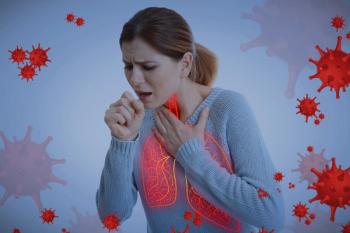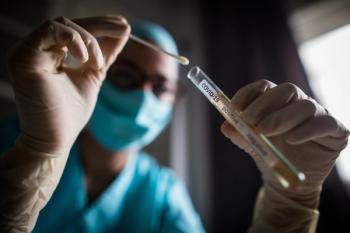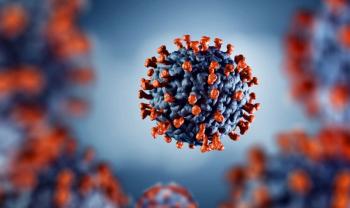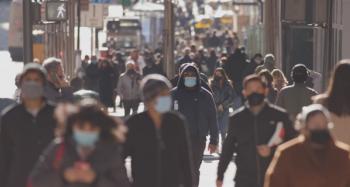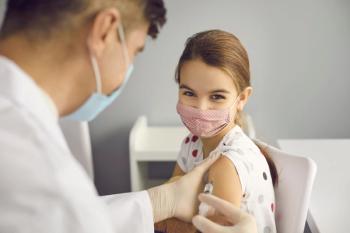
Why the COVID-19 Bivalent Vaccine Booster Uptake is Slow
COVID-19 bivalent booster uptake has been very sluggish, even though the booster provides better protection against newer variants. What can pharmacists and their teams do to improve booster rates?
The majority of Americans are shrugging off the most recent COVID-19 vaccine booster shot, which combats the current omicron variants.
Despite US health officials’ recommendations that all eligible individuals — particularly older Americans — get the booster shot, the uptake has been slow, according to pharmacy organizations.
Around half of Americans have heard either little or nothing about the bivalent shots and many do not realize they are eligible for them, according to a Kaiser Family Foundation poll.1
“America is not rushing out to get the new booster,” Kaiser Family Foundation CEO Drew Altman said in a statement. “Most are only dimly aware of it, which is not surprising in a country that seems to have mostly moved on.”
Many of those surveyed don’t realize they are eligible for the booster, according to the poll.
“People hear about a ‘booster’ shot and think they’ve already received a booster, when in fact this vaccine covers other variants [that] they may be unaware of,” said Michael Ganio, PharmD, senior director of pharmacy practice and quality for the American Society of Health-Systems Pharmacists.
Of those who have completed a primary series, about 110.8 million people have received a booster dose, and more than 14.78 million people have received an updated (bivalent) booster dose, according to the CDC.2
“The uptake of boosters has been slow to date,” acknowledged John Beckner, RPh, senior director of strategic initiatives, for the National Community Pharmacists Association. “That being said, there was a cohort that came in to get boosters as soon as they were available.”
Consumers are confused over eligibility and have “general vaccine fatigue,” Beckner noted. “Certainly some people are tired of hearing and thinking about the coronavirus and could be ignoring any messaging surrounding COVID-19 — beyond that of just the Biden administration.”
With COVID-19 case numbers declining and more maintained, the initial scare of COVID-19 hospitalizations and deaths is no longer as apparent to the public, Ganio added. “Thus, urgency to get the bivalent booster is expectedly absent.”
In addition, some people just had COVID-19 and it was mild, so they don’t feel the need to be vaccinated again, Beckner said. Another reason for the slow uptake on the boosters is that some individuals experienced see effects with other COVID-19 vaccinations and “don’t want to deal with those right now,” according to Beckner.
However, President Joe Biden received the bivalent booster on national television and called on all Americans to get their boosters before the holidays to help prevent a possible winter surge, according to
To increase bivalent booster vaccination rates, pharmacies should continue to reinforce the message at the site of care, according to Beckner. "Pharmacists and their staff are trusted and provide a source of credible information. Utilize support staff whenever possible.”
“Continued education about boosters offering the best protection against new emerging variants. Share information regarding the differences between the types of vaccines on the market today. Don’t forget to plug the seasonal flu vaccine. Boosters are important but so is the flu shot,” Beckner added.
Patients need to be educated on the difference between the new bivalent booster versus previous vaccines and who is indicated for which vaccine, according to Ganio. Pharmacists should continue to stay up-to-date regarding COVID-19 news and continue to promote vaccinations, “as it is the best preventative measure against COVID-19,” Ganio said.
Beckner and Ganio expect the pace of vaccination to pick up closer to the holidays.
“As with any holiday season, with the gathering of families, friends, and coworkers, both flu and COVID-19 cases can be expected to rise. However, these increases can be prevented with receiving the new COVID-19 bivalent booster and annual flu shot,” Ganio said. “CDC states it is okay to receive both flu and COVID-19 bivalent booster at the same time.”
References
1. Half of public has heard little or nothing about the new COVID-19 booster aimed at omicron; Many don’t know If the CDC recommends that they get the new booster. News release. Kaiser Family Foundation. Published September 30, 2022. Accessed October 20, 2022.
2. COVID data tracker weekly review. Centers for Disease Control and Prevention. Updated October 12, 2022. Accessed October 26, 2022.
Newsletter
Pharmacy practice is always changing. Stay ahead of the curve with the Drug Topics newsletter and get the latest drug information, industry trends, and patient care tips.

